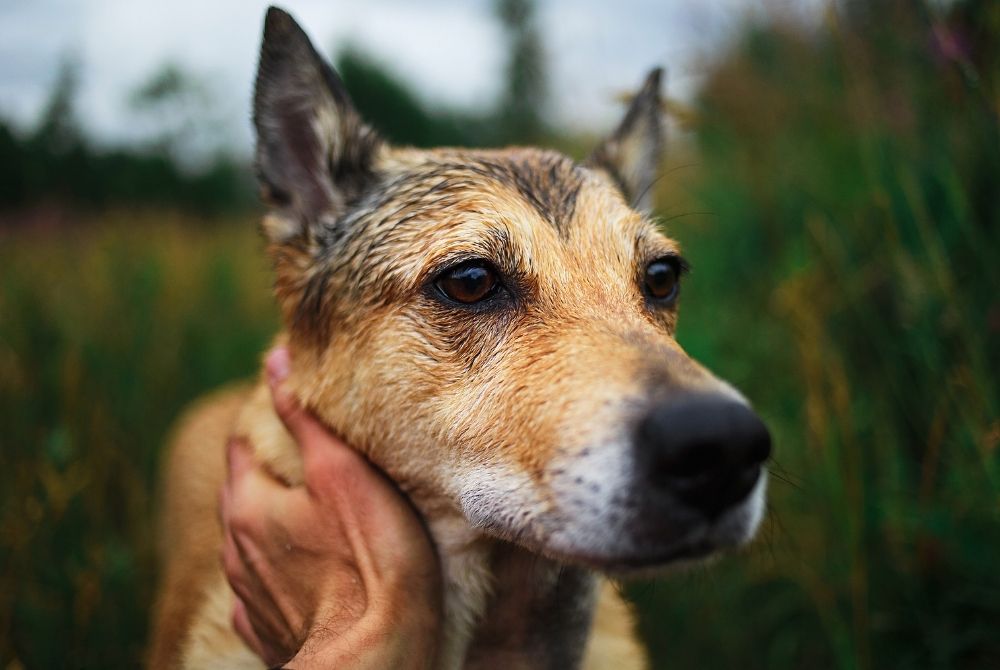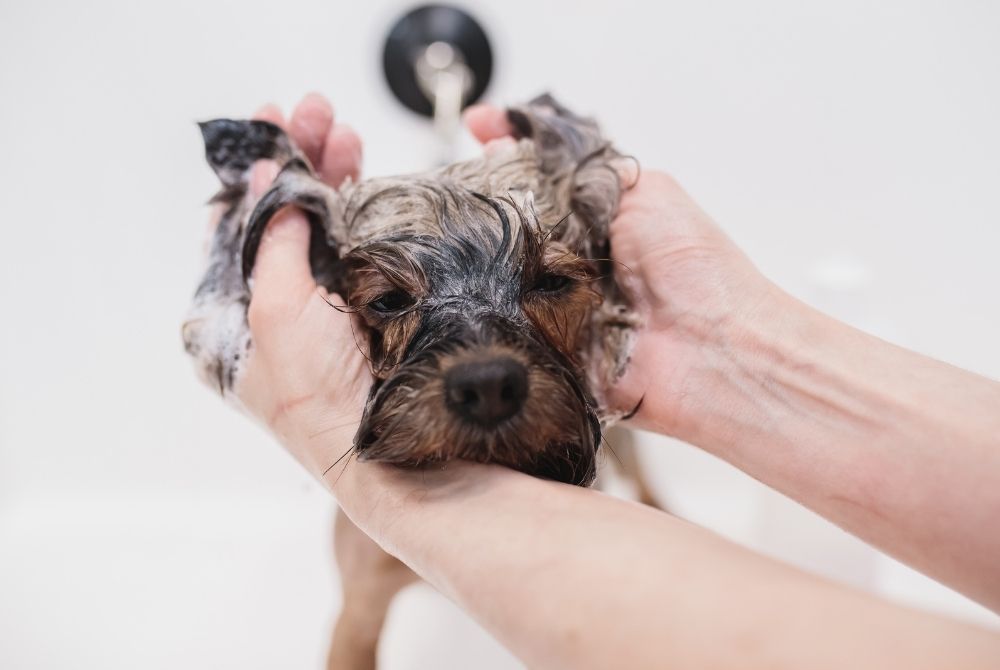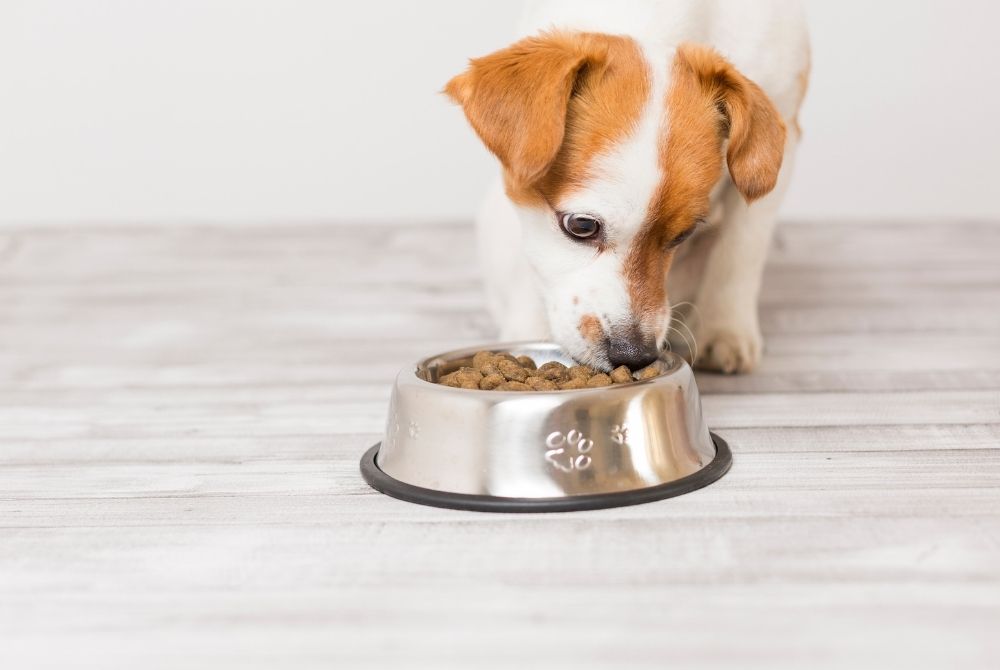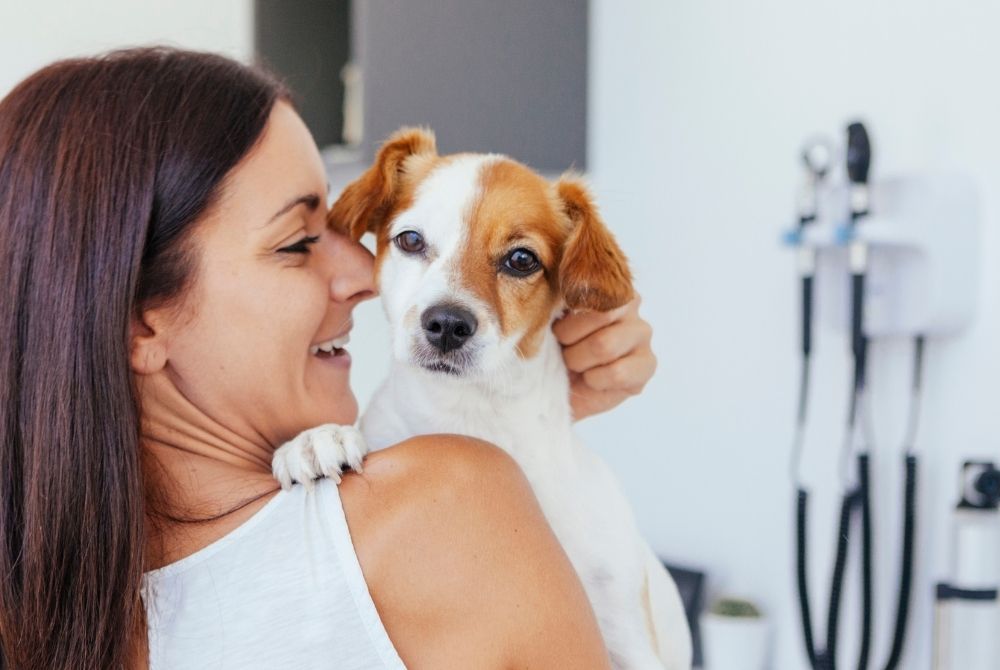5 Ways to Keep Your Pup’s Skin Healthy
Published May 5, 2022


Content Reviewed by an Essentials PetCare Veterinarian
Does your dog need a “spa day”? You may think to survey your dog’s health by the shininess of their coat, but don’t forget: dogs need skincare, too.
Certain dogs may have special sensitivities, but all dogs could use a little attention in this area. The state of their skin can indicate the presence of deeper problems, like internal parasites or external pests, and of course the usual suspects – fleas and ticks.
These are why skin care for dogs is so important, and why you should check your dog’s skin periodically. Like other aspects of your dog’s health, an ounce of prevention is worth a pound of cure.


Skin Care for Dogs: What Does Healthy Skin Look Like in Dogs?
When you take a look, what would you see in an average, healthy dog? What’s normal, and what’s cause for alarm?
Well, it is normal for the color of a dog’s skin to vary. Different breeds have different skin colors under their coat. Shades range from pinkish to brown to black. Skin appearance may be solid or spotted – either is fine.
Much like healthy human skin, it should be on the smoother side. Redness, flakiness, scabs, or inflammation mean that you need to look more deeply into your dog’s skin health.
Now that you know what to expect, let’s go through some tips on maintaining good skin care for dogs.
Soothe Dry Skin
Dogs get dry skin just like people do, and for similar reasons. It can be related to:
- Dry, cold weather
- Allergies
- Excessive bathing, which strips their skin of natural oils
- Not enough bathing, resulting in built-up dust and debris
- Internal or external parasites – we’ll discuss more later
- Infections like bacteria or yeast
- Chronic skin conditions, especially in more susceptible breeds
- More rarely, a larger disease, like cancer or an auto-immune disorder
If the cause is simpler, like dry weather, this may simply require ongoing maintenance. Try adding a humidifier to your household. You can also wash your dog with veterinarian-approved shampoos – which don’t strip skin oils – and apply dog skin moisturizer.
Address Hot Spots
You may have caught your dog licking a hot spot on their body incessantly. A form of dermatitis, hot spots often arise in warmer weather, when your dog becomes irritated by an itchy sensation such as allergies or a flea bite. The itching leads to aggressive scratching, licking, or chewing, which causes abrasions in the skin and leads to a rapidly developing bacterial skin infection.
Hot spots often worsen without intervention, because dogs can’t stop scratching or licking the itchy spot. Through this cycle, they become more and more infected.
This is where you play a key role. Help heal your dog’s hot spot by taking them in for a check-up. The vet will assess and recommend several routes:
- Removing hair around the hot spot to reduce body heat and improve air flow
- Disinfecting the area with gentle antiseptics
- Applying topical antibiotics with oral antibiotics in severe cases
- Using steroids, if necessary, to quell inflammation and itching
- Introducing the “cone of shame,” as some call it – they will likely hate it, but making your dog wear a cone around their neck can prevent them from licking long enough to let the hot spot heal
Skin Pests
Skin care for dogs also involves monitoring for any unwanted bug residents on your pup. Common bugs that can cause itching, inflammation, or disease include fleas, ticks, or mites.
To check, gently part the strands of your dogs’ hair in thinner areas, like their belly. Fleas especially like to cause problems on the lower back around the base of the tail, as well as around the neck.
Sometimes this is more easily done by blowing air on the skin rather than using your fingertips. You may see signs through dark flecks (flea droppings), swollen bites, or the visible presence of tiny, hopping fleas or round, embedded ticks.


A Healthy Diet
When in doubt, go back to the basics. Most people don’t think about the impact that diet has on skin care for dogs, but a nutritious, well-rounded diet will work wonders for their skin and hair.
This especially applies if you think your dog might have allergies. They could be allergic to some ingredients in their food, like wheat or chicken.
If you’re not sure about the best diet options for your pup, consult with your veterinarian.


Stay On Top of Check-Ups
As we mentioned already, prevention goes a long way. Checking your dog’s skin not only helps them stay comfortable and relaxed – you might catch a larger disease before it progresses any further. This could allow you to go for much less extensive treatment options, which are generally less stressful for your furry friend and your wallet.
We offer an affordable Canine Skin Package at Essentials PetCare. Plus, all of our services come with a check-up from one of our caring, qualified veterinarians. Visit us today. Maintaining your pup’s health is within your reach!
Essential Tip: If you see your pup scratching, don’t just jump for a flea bath. A quick visit at Essentials PetCare can help you figure out what’s really causing that itch. It’ll save you time and money in the long run – and restore your dog’s comfort faster.



